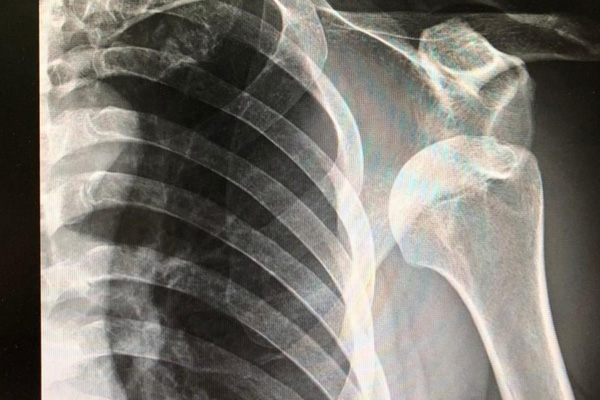
Treatment for a shoulder dislocation typically involves the following steps:
1. Immediate Care (First Aid)
- Immobilization: Keep the shoulder still and avoid moving the arm. Use a sling or a piece of cloth to immobilize the arm in a comfortable position.
- Cold Compress: Apply ice packs to the shoulder for 15-20 minutes every hour to reduce swelling and pain. Ensure the ice is wrapped in a cloth to avoid direct contact with the skin.
- Seek Medical Attention: Dislocated shoulders require prompt medical evaluation to properly reposition the joint.
2. Medical Treatment
- Reduction: A healthcare professional will perform a procedure called "reduction" to put the shoulder joint back into place. This may be done manually, sometimes under local or general anesthesia, depending on the severity and pain.
- Imaging: X-rays or other imaging tests may be used to confirm the dislocation and check for any associated fractures or soft tissue injuries.
- Immobilization: After reduction, the shoulder may be immobilized using a sling or shoulder brace for several weeks to allow the joint to heal.
3. Rehabilitation
- Rest: Initially, rest is crucial to allow the tissues to heal properly.
- Physical Therapy: Once the initial pain and swelling subside, physical therapy is usually recommended to restore range of motion, strengthen the shoulder muscles, and improve stability.
- Gradual Return to Activity: Gradually return to normal activities, avoiding any movements that might stress the shoulder joint prematurely.
4. Surgical Treatment (if necessary)
- Indications for Surgery: Surgery may be required if there are repeated dislocations, significant ligament or tendon damage, fractures, or if conservative treatment fails.
- Procedures: Surgery might involve repairing torn ligaments or tendons, or tightening the joint capsule. In some cases, bone grafting or joint stabilization procedures might be needed.
5. Post-Treatment Care
- Follow-Up: Regular follow-up with your healthcare provider to monitor healing and progress.
- Strengthening Exercises: Continue with prescribed strengthening exercises to maintain shoulder stability and prevent future dislocations.
- Avoid Risk Factors: Avoid activities that might put undue stress on the shoulder, particularly in the early stages of recovery.
Note: Treatment may vary based on the severity of the dislocation, the patient’s overall health, and whether there are any complications like fractures. Always consult with a healthcare provider for a personalized treatment plan.


